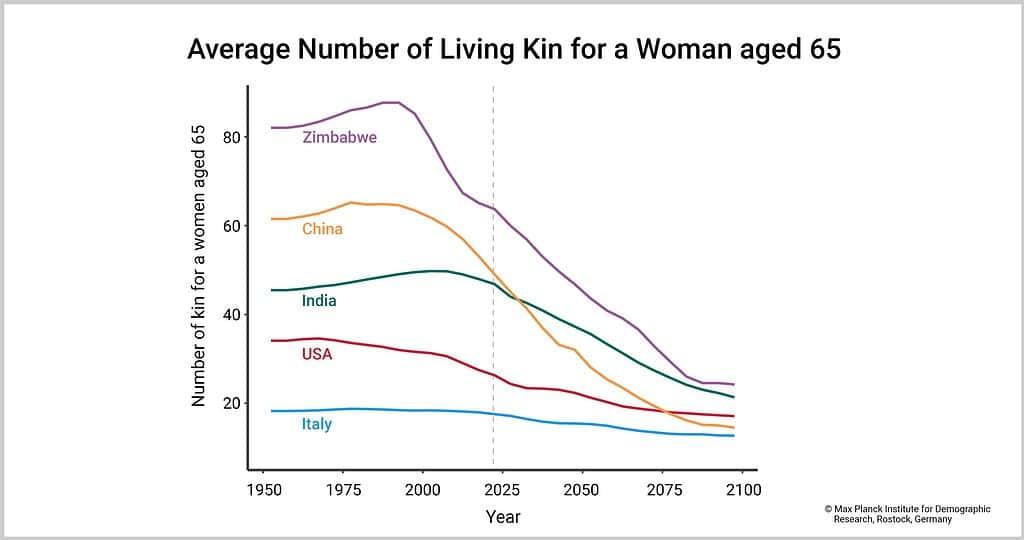Someone born today is likely to have a smaller number of relatives throughout their life and a very different family structure than we do. They can expect to have fewer cousins, nieces, nephews and grandchildren and more great-grandparents and grandparents, according to a new study. This could create major challenges to our overall social support systems.

Researchers at the Max Planck Institute for Demographic Research (MPIDR) published a new study looking at the evolution of human kinship relationships around the world. Kinship is a term that refers to a system of social organization based on family ties. It’s a universal human phenomenon that takes different cultural forms across countries.
In their study, the team, also working with researchers in Argentina and the Netherlands, found that the number of relatives that an individual has will decrease by at least 35% in the near future. While in 1950 a 65-year-old woman had an average of 41 living relatives, by 2095 a woman of the same age would have 25 living relatives.
“We asked ourselves how demographic change will affect the ‘endowment’ of kinship in the future. What was the size, structure, and age distribution of families in the past, and how will they evolve in the future?” Diego Alburez-Gutierrez, head of the research group at MPIDR and one of the study authors, said in a recent news release.
A social support challenge
For the study, the researchers looked at historical and projected data from the 2022 review of the United Nations’ World Population Prospects. They used a model to represent the relationship between a person, their ancestors and their descendants. The model gives average sex and age distributions for different types of kinship.
They defined family size as the number of great-grandparents, grandparents, parents, children, grandchildren, and great-grandchildren, as well as aunts and uncles, nieces and nephews, siblings, and cousins. Then, they documented any differences. From their data, they determined that average family size will decline around the world because of lower and later fertility.

The greatest decline would be seen in Latin America and the Caribbean, with a 65-year-old woman going from 56 relatives in 1950 to 18.3 in 2095 — a 67% drop. Meanwhile, regions where family structures are already small won’t see significant changes. In the US and Europe, a woman aged 65 who had 25 relatives in 1950 would have 15.9 in 2095.
The researchers expect family networks to become more “vertical” over time, with kinship structure increasingly composed of (great)grandparents, parents, children, and (great)grandchildren. They also said kinship networks will age considerably, seen by a larger age gap between individuals and their relatives in the near future.
People would then have family networks that are not only smaller but also older. While grandparents and great-grandparents will be in greater supply in the future, this won’t necessarily help to ease the burden of childcare for parents, as these older relatives may also need care themselves. This underscores challenges for social support systems.
“Individuals in the future will face increasing demands for informal care from kin worldwide, albeit with significant regional variation. Our findings support the calls for more investment in childcare and old-age care to alleviate the burden of individuals aging with fewer kinship resources to rely on,” the researchers concluded.
The study was published in the journal PNAS.


